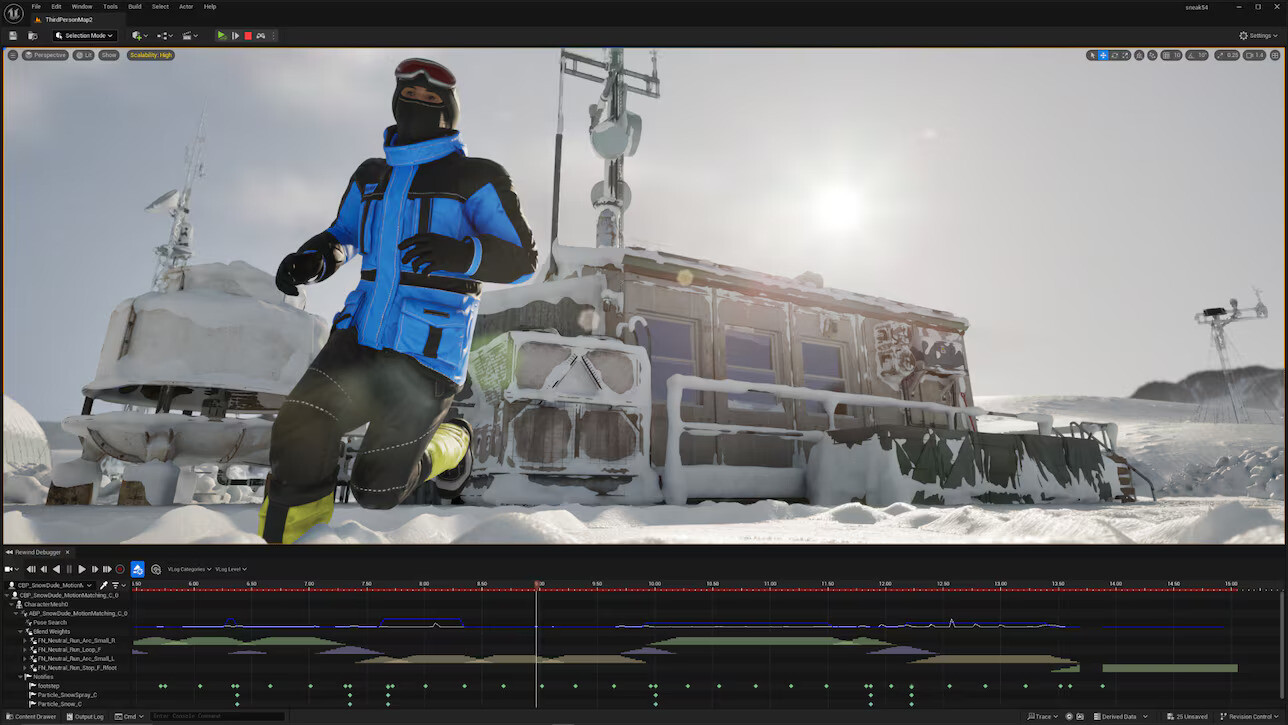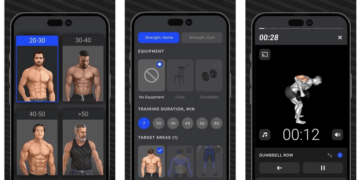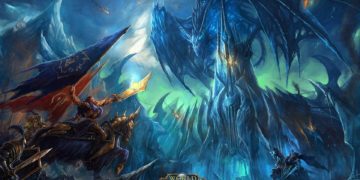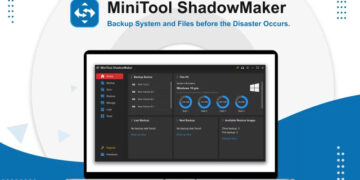Exciting news for developers! Unreal Engine 5.4 is now available, packed with new features and significant enhancements. These improvements boost performance, visual quality, and user productivity, benefiting a wide range of creators globally.
This update includes the latest tools used in the creation of new content for games like Fortnite Chapter 5, Rocket Racing, Fortnite Festival, and LEGO Fortnite. The details are organized into sections for easier understanding.
You can download the latest version of Unreal Engine here.
This update brings major improvements to the animation tools in Unreal Engine. Now, you can set up and create character animations directly in the engine. This process is fast, simple, and fun, eliminating the need to use external applications.
Additionally, there are updates to the Skeletal Editor and new functions in the Deformer Graph, making it more user-friendly.
In this update, we’ve made our animation tools easier to use and more powerful, along with making workflow processes smoother. New Experimental Gizmos are introduced, alongside a reorganization of Anim Details. We’ve also enhanced the Constraints system and introduced a new feature called Layered Control Rigs, which greatly eases the process of layering animation over animation clips.
Additionally, the Sequencer—Unreal Engine’s nonlinear animation editor—has been significantly revamped for better clarity and usability, especially within the Sequencer Tree. Another new feature is Keyframe Scriptability, which expands the possibilities for developing custom animation tools.
The Motion Matching feature, which was initially released as an Experimental feature, is now ready for fuLl production use. It has been thoroughly tested in Fortnite Battle Royale and is available across all platforms, from mobile to console, and works with all 100 characters plus NPCs.
Motion Matching offers a cutting-edge framework for animation. It simplifies animation during gameplay by searching a large database of pre-recorded animations. The search uses the current movement of the game character as the basis for finding the right animation.
In this update, we’ve made the animation tools stronger, faster, and able to handle more data. We also included a set of debugging tools to help developers understand how these tools work.

For gameplay, we’ve introduced Choosers, a highly anticipated tool that lets you select animations based on the game’s context. This system can use variables to choose animations and also set variables based on those choices to feedback into the game’s logic.
Nanite, Unreal Engine 5’s system for virtualized micropolygon geometry, has new updates. A new Experimental Tessellation feature now allows for the addition of fine details like cracks and bumps at the time of rendering, without changing the original mesh.
In this update, Temporal Super Resolution (TSR) has been improved in terms of stability and performance. These enhancements ensure consistent results across different platforms and include reduced ghosting with the help of new history resurrection techniques. Also, materials that use pixel animation can now be marked specifically.
Moreover, new visualization modes have been added to help adjust and troubleshoot TSR more effectively. Additionally, there are several new choices in the Scalability settings to better manage TSR according to desired performance levels.
In Unreal Engine 5.4, we’ve put a lot of work into boosting rendering performance, especially since many developers aim for 60 Hz experiences. This includes redesigning systems to allow more tasks to run at the same time and introducing GPU instance culling to hardware ray tracing.
This ray tracing now also supports more types of primitives and features an improved Path Tracer. Additionally, we have enhanced shader compilation, which significantly speeds up the time it takes to prepare projects for final use.
For those working on linear content, Unreal Engine 5.4 introduces a significant update to the Movie Render Queue, now available as an Experimental feature called Movie Render Graph (MRG).
This new node-based structure allows users to create graphs for rendering a single shot or develop them for more complex multi-shot projects involving large teams of artists. These graphs are designed to be compatible with pipelines and include Python hooks for studios to develop their own tools and automations.
MRG also features Render Layers, a highly requested addition that enables the easy creation of high-quality elements for post-production compositing. This includes the ability to separate foreground and background elements and supports both the Path Tracer and the Deferred Renderer.
In Unreal Engine 5.4, the Neural Network Engine (NNE) has been upgraded from Experimental to Beta status. It now supports use both inside the editor and during actual gameplay, allowing developers to efficiently run their already trained neural network models.
NNE can be used for various purposes such as tooling, animation, rendering, and physics, which all have unique requirements regarding platforms and model compatibility.
To meet these varied needs, NNE offers a unified API that makes it easy to change backends when needed. Additionally, extensibility hooks are available, allowing third-party developers to integrate the NNE interface into their plugins.
This release introduces the Unreal Cloud DDC, a new self-hosted cloud storage solution for the Unreal Engine Derived Data Cache (DDC). It’s designed for teams and individual users who are spread out, allowing them to share Unreal Engine cached data effectively over public networks.
What we think?
I think the new Unreal Engine 5.4 will be amazing for creators. The updates, especially in animation tools, will make creating games faster and more fun. The improvements in performance and the new features like Motion Matching and Movie Render Graph will help make games look better and work smoother.
I’m excited to see what developers will create with these tools. Overall, it’s a big step forward for game development.













































